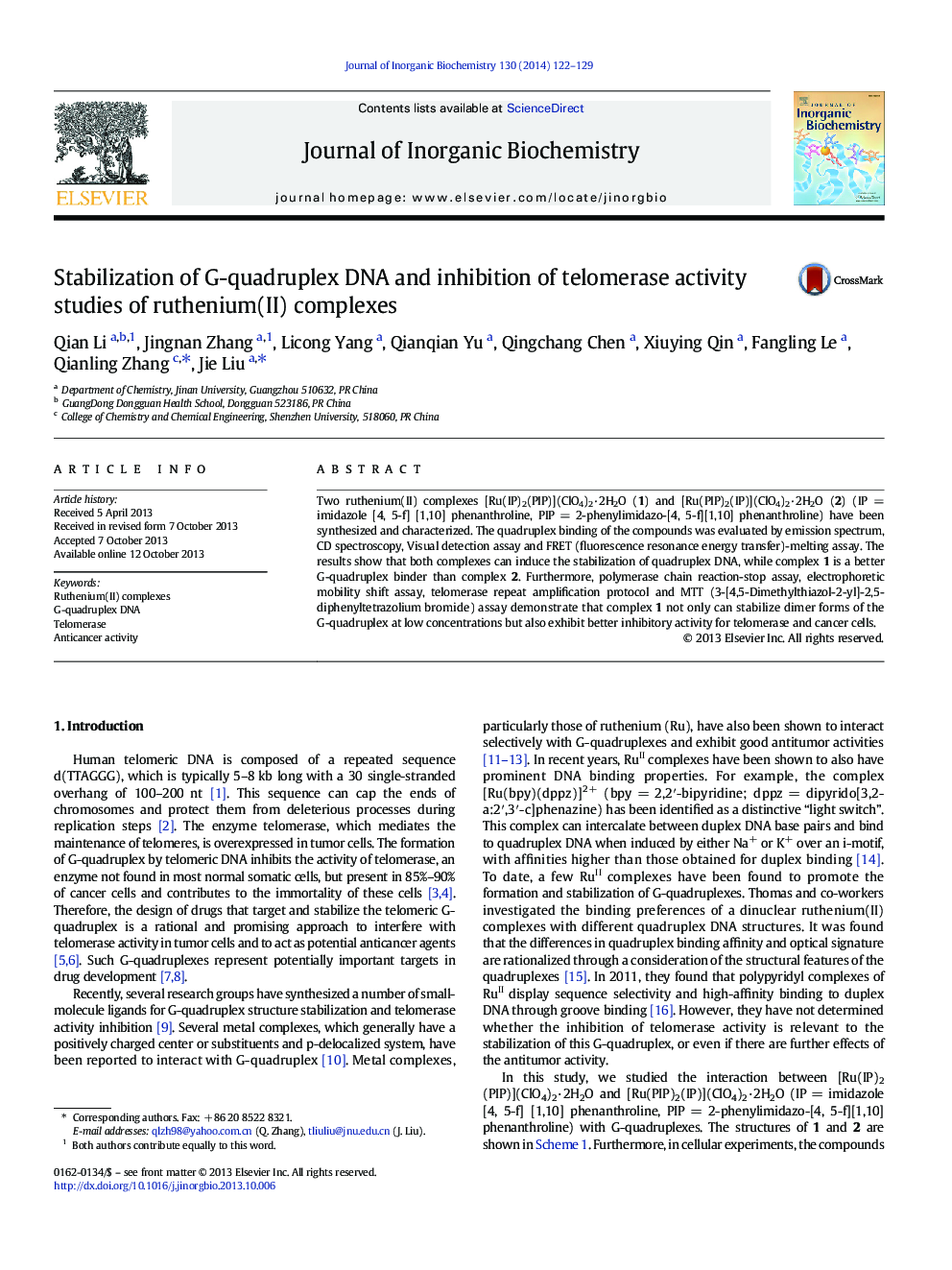| Article ID | Journal | Published Year | Pages | File Type |
|---|---|---|---|---|
| 1316296 | Journal of Inorganic Biochemistry | 2014 | 8 Pages |
•Ru-complexes are capable of selectively binding to bcl-2 G-quadruplexes DNA.•The overlarge ligand of Ru-complex blocks inducing the bcl-2 G-quadruplexes.•Ru-complex can well induce the formations of antiparallel G-quadruplex.•Ru-complex can enter the nuclei of HeLa cells and induce cell apoptosis.
Two ruthenium(II) complexes [Ru(IP)2(PIP)](ClO4)2·2H2O (1) and [Ru(PIP)2(IP)](ClO4)2·2H2O (2) (IP = imidazole [4, 5-f] [1,10] phenanthroline, PIP = 2-phenylimidazo-[4, 5-f][1,10] phenanthroline) have been synthesized and characterized. The quadruplex binding of the compounds was evaluated by emission spectrum, CD spectroscopy, Visual detection assay and FRET (fluorescence resonance energy transfer)-melting assay. The results show that both complexes can induce the stabilization of quadruplex DNA, while complex 1 is a better G-quadruplex binder than complex 2. Furthermore, polymerase chain reaction-stop assay, electrophoretic mobility shift assay, telomerase repeat amplification protocol and MTT (3-[4,5-Dimethylthiazol-2-yl]-2,5-diphenyltetrazolium bromide) assay demonstrate that complex 1 not only can stabilize dimer forms of the G-quadruplex at low concentrations but also exhibit better inhibitory activity for telomerase and cancer cells.
Graphical abstractThe figure presents the effect of [Ru(IP)2(PIP)](ClO4)2·2H2O (1) and [Ru(PIP)2(IP)](ClO4)2·2H2O (2) on the assembly of the HTG21 structure illustrated by native PAGE analysis.Figure optionsDownload full-size imageDownload as PowerPoint slide
